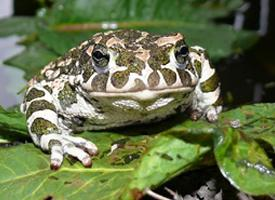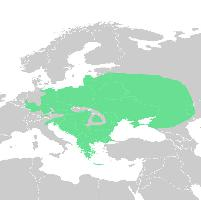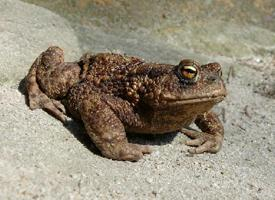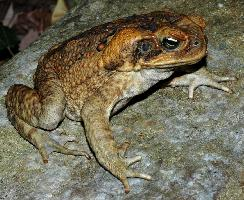
Súlyok és méretek
| Hossz | 8 cm |
|---|
Veszélyeztetettség
| Veszélyeztetett |
Állatleírás
The European Green Toad, scientifically named Bufotes viridis, is a fascinating amphibian species that exhibits a remarkable blend of resilience and adaptability, thriving in a wide array of environments across Europe and parts of Asia. This species is distinguished by its striking appearance and intriguing behaviors, making it a subject of interest for both scientists and nature enthusiasts.Physical Description:
Bufotes viridis boasts a robust and somewhat squat body, with adult individuals typically reaching lengths of up to 10 centimeters, although sizes can vary. The skin of this toad is relatively smooth compared to other toad species, with small warts scattered across its back. The most captivating aspect of its appearance, however, is its coloration. The European Green Toad lives up to its name with a vivid green and black mottled pattern that adorns its back. This distinctive patterning acts as a natural camouflage, blending seamlessly with the grassy and leafy terrains of its natural habitat. The belly of the toad is usually a lighter color, ranging from white to a pale yellow, and is speckled with dark spots.
Habitat and Distribution:
The European Green Toad is a versatile species, inhabiting a wide range of environments. Its distribution spans across much of Europe, extending into parts of North Africa and Central Asia. This toad favors open landscapes such as grasslands, steppes, agricultural fields, and even urban areas, where it can often be found in gardens and parks. It is also capable of surviving in semi-arid regions, showcasing its remarkable adaptability.
Behavior and Diet:
Bufotes viridis is primarily nocturnal, spending the day hidden under rocks, in burrows, or amongst vegetation to avoid the heat and predators. At night, it emerges to feed. Its diet is opportunistic and primarily consists of various invertebrates, including insects, spiders, and worms. During the mating season, which occurs in the spring following the winter thaw, males can be heard producing a distinctive and loud mating call to attract females to temporary pools of water for breeding.
Reproduction:
The reproductive strategy of the European Green Toad involves laying eggs in temporary water bodies, such as puddles, ditches, or slow-moving streams. The female can lay thousands of eggs, which are deposited in long strings and attached to vegetation or other substrates in the water. These eggs hatch into tadpoles, which undergo a metamorphosis over several months, eventually emerging from the water as fully formed toads. This lifecycle ties the species closely to the availability of suitable aquatic habitats for breeding.
Conservation Status:
Currently, the European Green Toad is classified as Least Concern by the International Union for Conservation of Nature (IUCN), indicating that it is relatively widespread and abundant. However, like many amphibian species worldwide, it faces threats from habitat destruction, pollution, and climate change, which could impact its populations in the future.
In conclusion, the European Green Toad is a remarkable amphibian with a distinctive appearance and a broad ecological niche. Its ability to adapt to various environments and its intriguing lifecycle make it a valuable species for studying the impacts of environmental changes on amphibian populations. Despite its current stable status, ongoing conservation efforts are essential to ensure that this vibrant species continues to thrive across its natural range.
Előfordulási térkép

Hasonló állatok
Új állatfotók
Top 10 állat
- Dolphin gull (Leucophaeus scoresbii)
- Diana monkey (Cercopithecus diana)
- Moustached guenon (Cercopithecus cephus)
- Galápagos tortoise (Geochelone nigra complex)
- Japanese macaque (Macaca fuscata)
- Stone loach (Barbatula barbatula)
- Russian tortoise (Testudo horsfieldii)
- Greek tortoise (Testudo graeca)
- Common flying dragon (Draco volans)
- Vendace (Coregonus albula)


